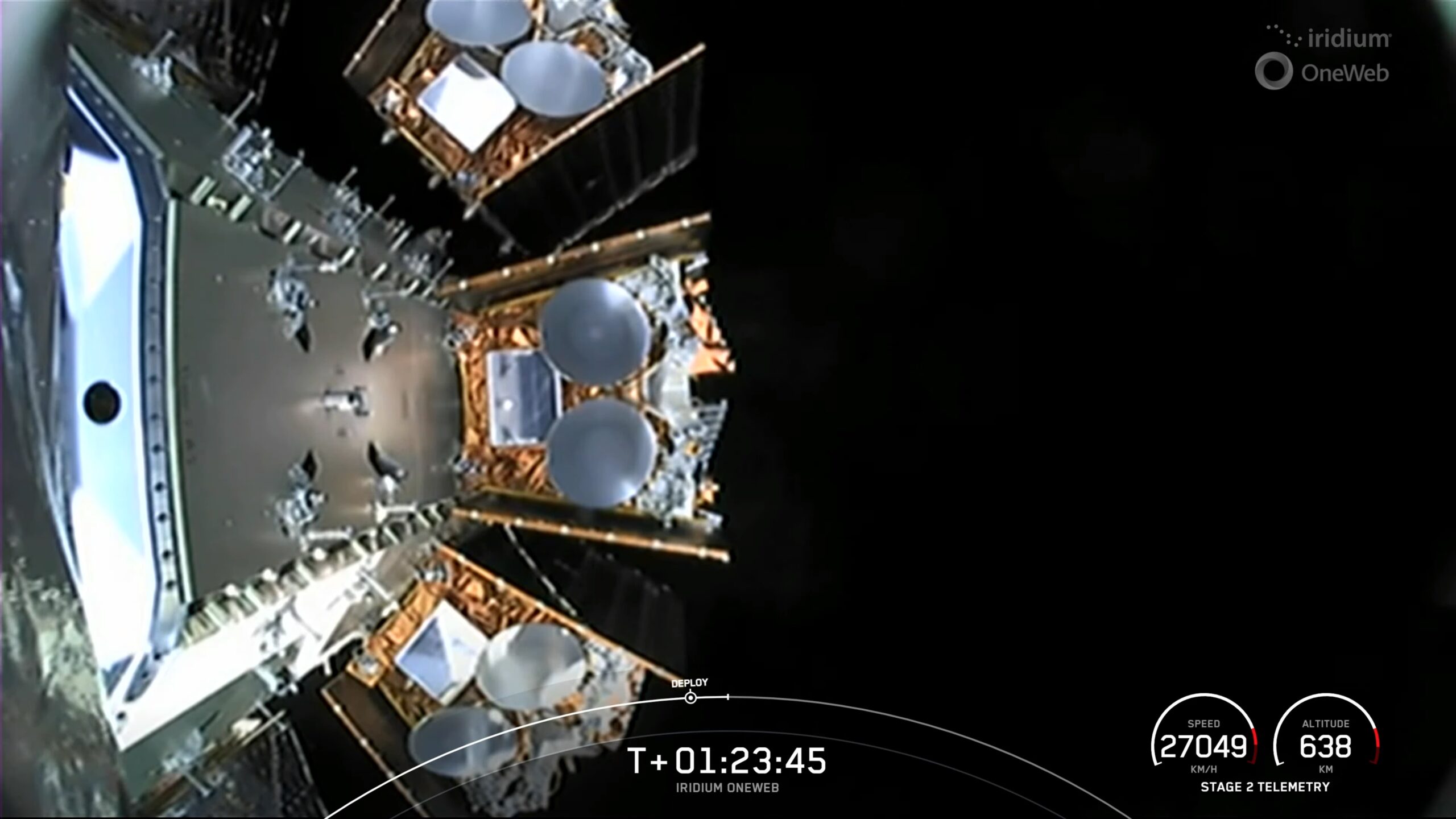TAMPA, Fla. — SpaceX launched a technology demonstration satellite for OneWeb’s second-generation broadband constellation May 20, along with spares for the British firm’s current low Earth orbit (LEO) network and another that U.S.-based Iridium Communications operates.
A Falcon 9 rocket carrying a total 21 spacecraft lifted off 9:16 a.m. Eastern amid heavy fog at Vandenberg Space Force Base in California on a polar trajectory to the south.
All five Iridium spares were deployed an hour later, followed by 16 OneWeb satellites that separated in pairs.
The rocket’s first-stage booster successfully landed on a droneship in the Atlantic Ocean for reuse following its eleventh flight.
OneWeb and Iridium separately confirmed contact with all their satellites following the mission, which was postponed by a day for reasons SpaceX did not disclose.
OneWeb now has 633 first-generation satellites in LEO, although it only needs 588 to provide global coverage, with the rest serving as in-orbit backups.
The satellites that pushed OneWeb passed the 588-satellite mark launched March 25 and the company recently said it is on track to launch global commercial services by January.
The satellites were built by prime contractor Airbus OneWeb Satellites, a Florida-based joint venture the operator shares with Airbus.
Iridium picked Europe’s Thales Alenia Space as prime contractor for its Iridium NEXT connectivity constellation that comprises 66 operational satellites in LEO. SpaceX launched all these satellites between 2017 and 2019, in addition to nine in-orbit spares.
The May 20 mission launched five of the six spare satellites Iridium had been keeping in storage for at least four years. Iridium has not detailed any plans to deploy its final ground spare.
OneWeb’s Gen2
One of the satellites launched for OneWeb, JoeySat, is designed to test capabilities for a second-generation constellation the company has said could start deployments as soon as 2025.
One of several new technologies on JoeySat is the capability to remotely direct beams and signal strength, according to OneWeb, enabling the satellite to increase capacity at higher usage areas in response to spikes in demand.
Israel-based SatixFy built JoeySat’s payload, supported by funds from the European Space Agency and UK Space Agency, for assembly by Airbus OneWeb Satellites.
JoeySat uses the same satellite platform as OneWeb’s 150-kilogram Gen 1 spacecraft.
French geostationary fleet operator Eutelsat, which is seeking regulatory approvals to buy OneWeb, said May 11 that the Gen 2 satellites would be bulkier than Gen 1 and able to provide three to five times more capacity.
The companies also expect only to need a constellation of around 300 Gen 2 satellites, partly because they could leverage Eutelsat’s network in geostationary orbit over high-demand areas.
Eutelsat and OneWeb have not yet picked a manufacturer for the Gen 2 satellites.
